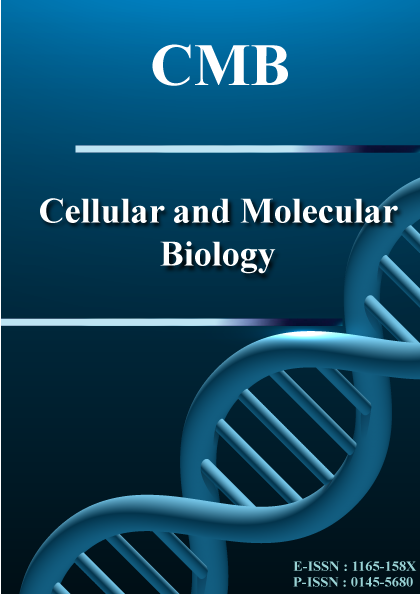Issue
Copyright (c) 2025 Joong Hyun Shim

This work is licensed under a Creative Commons Attribution-NonCommercial-NoDerivatives 4.0 International License.
The undersigned hereby assign all rights, included but not limited to copyright, for this manuscript to CMB Association upon its submission for consideration to publication on Cellular and Molecular Biology. The rights assigned include, but are not limited to, the sole and exclusive rights to license, sell, subsequently assign, derive, distribute, display and reproduce this manuscript, in whole or in part, in any format, electronic or otherwise, including those in existence at the time this agreement was signed. The authors hereby warrant that they have not granted or assigned, and shall not grant or assign, the aforementioned rights to any other person, firm, organization, or other entity. All rights are automatically restored to authors if this manuscript is not accepted for publication.Comparative analysis of stemness between dermal papilla cells and human dermal stem/progenitor cells
Corresponding Author(s) : Joong Hyun Shim
Cellular and Molecular Biology,
Vol. 71 No. 4: Issue 4
Abstract
Adult stem cells (ASCs) have great applicative potential in tissue regeneration. Comparative analyses of ASCs derived from various niches are essential for comprehending the unique traits of each population and evaluating their potential for therapeutic use. In this study, the proliferation ability, stem cell marker expressions, and differentiation potential of skin-derived ASCs were compared between hair follicle dermal papilla cells (HFDPCs) and human dermal stem/progenitor cells (hDSPCs). The cell division capacity of hDSPCs was significantly increased compared with HFDPCs, and the differentiation capacity into adipocytes, chondrocytes, and osteoblasts was significantly increased in hDSPCs. On the contrary, HFDPCs showed significantly increased expression of dermal papilla–related markers (SOX2, S100β, CORIN and Snai2) compared with hDSPCs. To analyze why these two types of ASCs have different properties, I analyzed intracellular signaling by protein kinase assay. Protein kinase assays showed that the phosphorylation of ERK1/2, c-JUN, CREB, YES, and GSK3α/β is significantly changed in HFDPCs and hDSPCs compared with dermal fibroblasts. HFDPCs have increased expression of markers related to hair regeneration compared with hDSPCs, on the other hand, hDSPCs are more multipotent than HFDPCs. The five above-mentioned phosphorylated signaling proteins (ERK1/2, c-JUN, CREB, YES, and GSK3α/β) are responsible for the characterization of HFDPCs and hDSPCs. The different characteristics of each skin-derived ASC might be a major factor influencing their effective use for tissue regeneration and therapeutics.
Keywords
Download Citation
Endnote/Zotero/Mendeley (RIS)BibTeX




